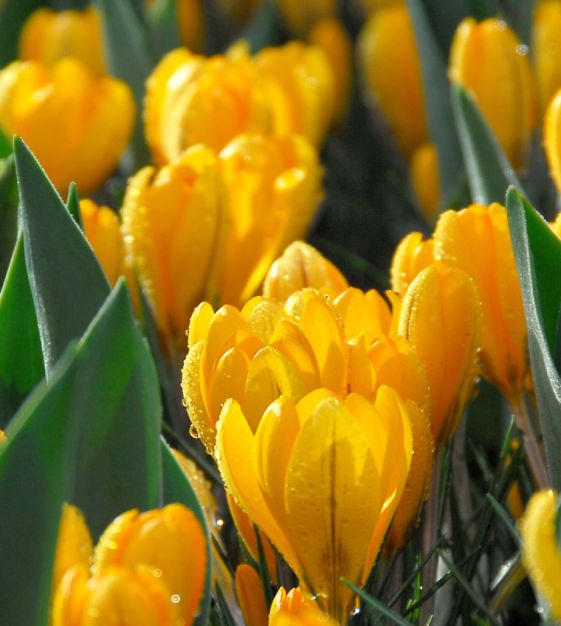-
- Discounted Collections
- Website Specials
- New for 2025!
- Tulips
- Narcissi
- Allium
- Anemone blanda
- Brodiaea
- Camassia
- Chionodoxa
- Corydalis
- Crocus
- Eranthis
- Eremurus
- Erythronium
- Fritillaria
- Galanthus
- Geranium
- Gladiolus
- Hyacinths
- Hyacinthoides
- Ipheion uniflorum
- Dutch Iris
- Rock Garden Iris
- Ixiolirion
- Leucojum aestivum
- Muscari
- Ornithogalum
- Oxalis
- Puschkinia
- Scilla
- Lilies
- Peonies
- Amaryllis
- Paperwhites
- Tender Bulbs
- Anemone Giants
- Tecolote Ranunculus
- Freesias
Crocus flavus Golden Yellow
Also known as C. flavus Yellow Mammoth, this 17th century heirloom has six-petaled, rich buttercup-yellow flowers with matching anthers and grass-like foliage with narrow, median silver-white stripes. Its graceful 5" tall flowers open and close on sunny days. These larger corms have reticulated tunics.
Crocus Class: Dutch Large Flowering. Bulb size: 9 cm/up. Full to partial sunlight. Bloom time in horticultural zone 5: April. Plant 5" deep and 4" apart. HZ: 4-8. Height: 5".
Crocus are The Art & Soul of Spring.
Crocus Horticultural Tips Stinze Plantings
Crocus are The Art & Soul of Spring.
Crocus Horticultural Tips Stinze Plantings





